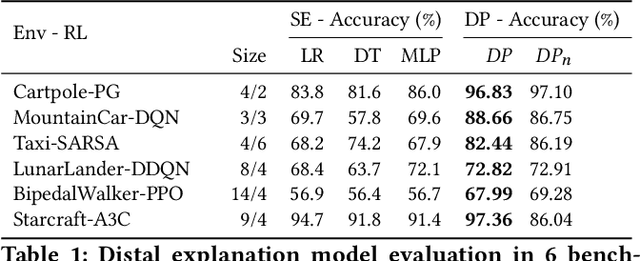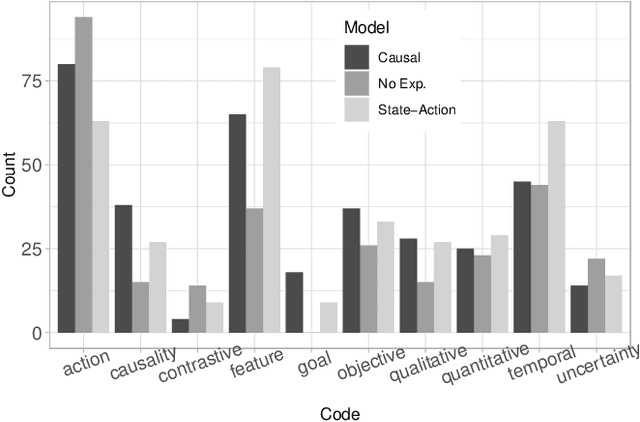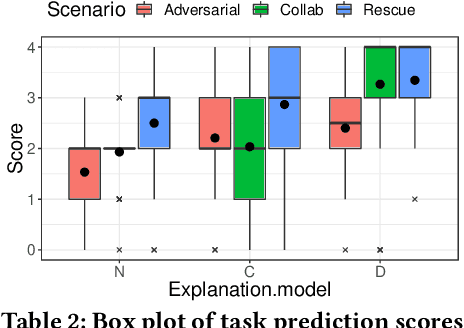Distal Explanations for Explainable Reinforcement Learning Agents
Paper and Code
Jan 28, 2020



Causal explanations present an intuitive way to understand the course of events through causal chains, and are widely accepted in cognitive science as the prominent model humans use for explanation. Importantly, causal models can generate opportunity chains, which take the form of `A enables B and B causes C'. We ground the notion of opportunity chains in human-agent experimental data, where we present participants with explanations from different models and ask them to provide their own explanations for agent behaviour. Results indicate that humans do in-fact use the concept of opportunity chains frequently for describing artificial agent behaviour. Recently, action influence models have been proposed to provide causal explanations for model-free reinforcement learning (RL). While these models can generate counterfactuals---things that did not happen but could have under different conditions---they lack the ability to generate explanations of opportunity chains. We introduce a distal explanation model that can analyse counterfactuals and opportunity chains using decision trees and causal models. We employ a recurrent neural network to learn opportunity chains and make use of decision trees to improve the accuracy of task prediction and the generated counterfactuals. We computationally evaluate the model in 6 RL benchmarks using different RL algorithms, and show that our model performs better in task prediction. We report on a study with 90 participants who receive explanations of RL agents behaviour in solving three scenarios: 1) Adversarial; 2) Search and rescue; and 3) Human-Agent collaborative scenarios. We investigate the participants' understanding of the agent through task prediction and their subjective satisfaction of the explanations and show that our distal explanation model results in improved outcomes over the three scenarios compared with two baseline explanation models.
 Add to Chrome
Add to Chrome Add to Firefox
Add to Firefox Add to Edge
Add to Edge